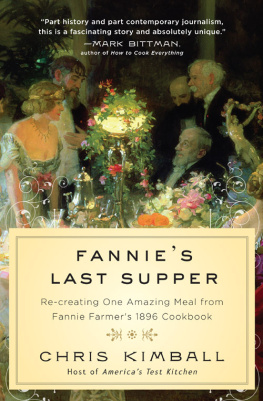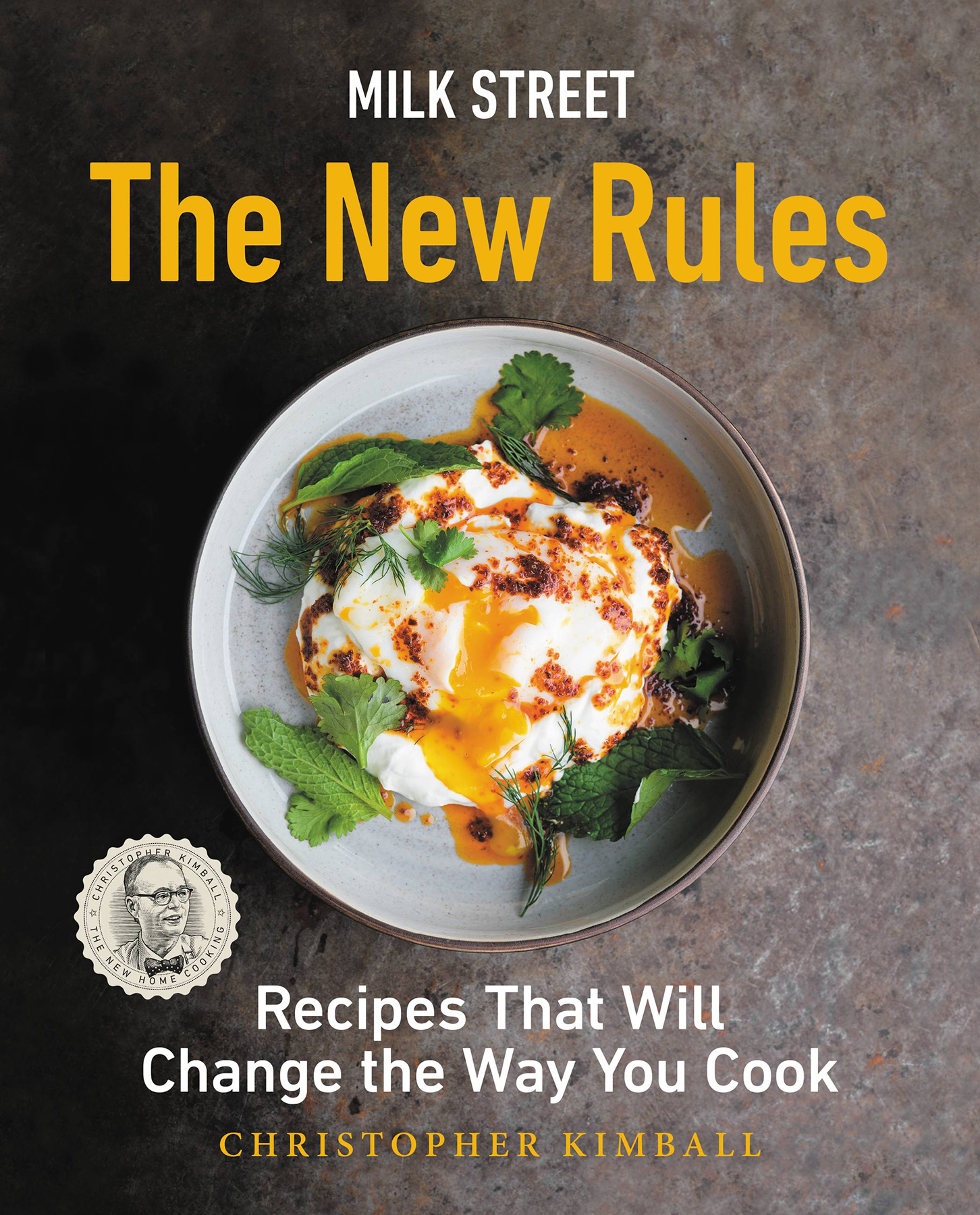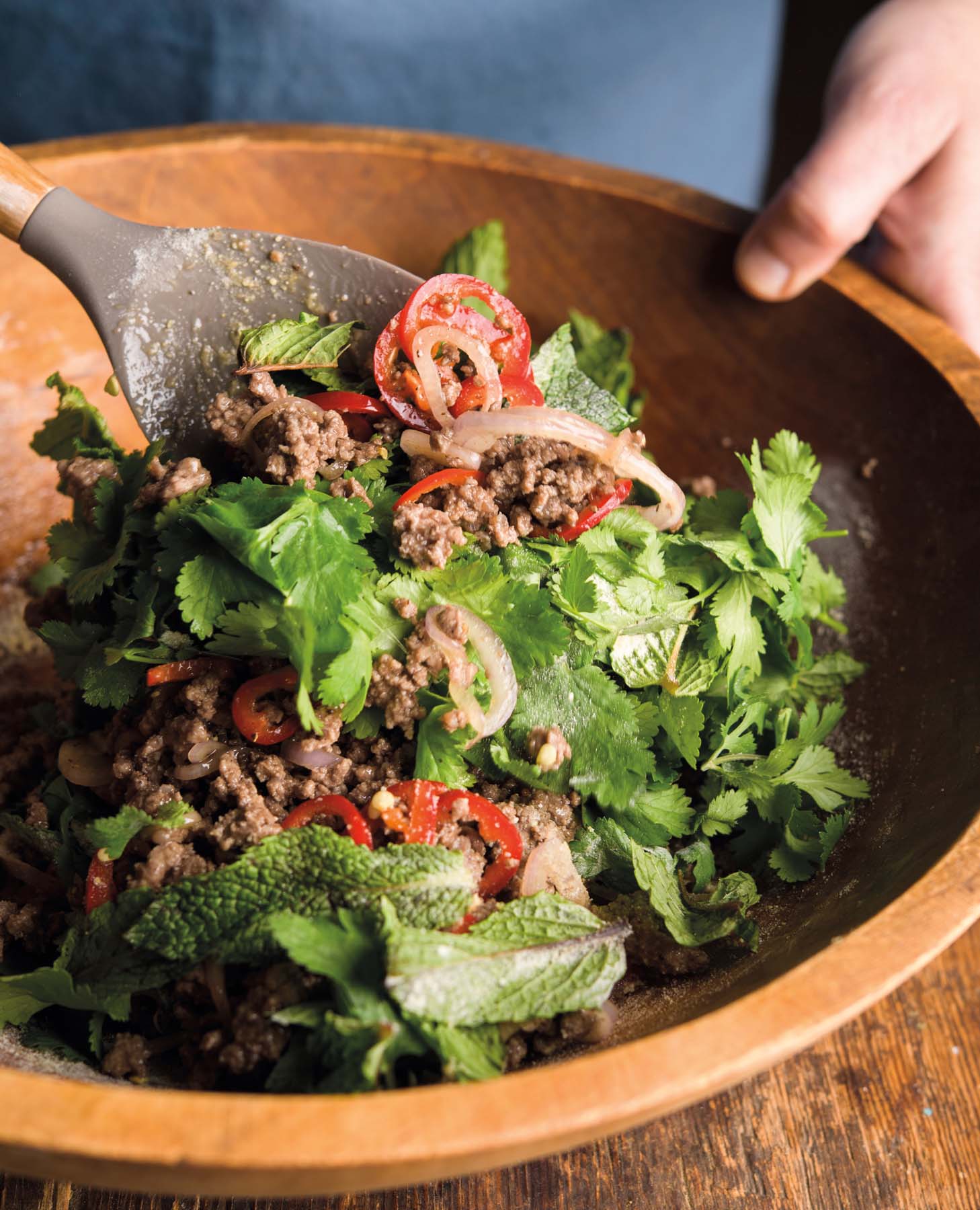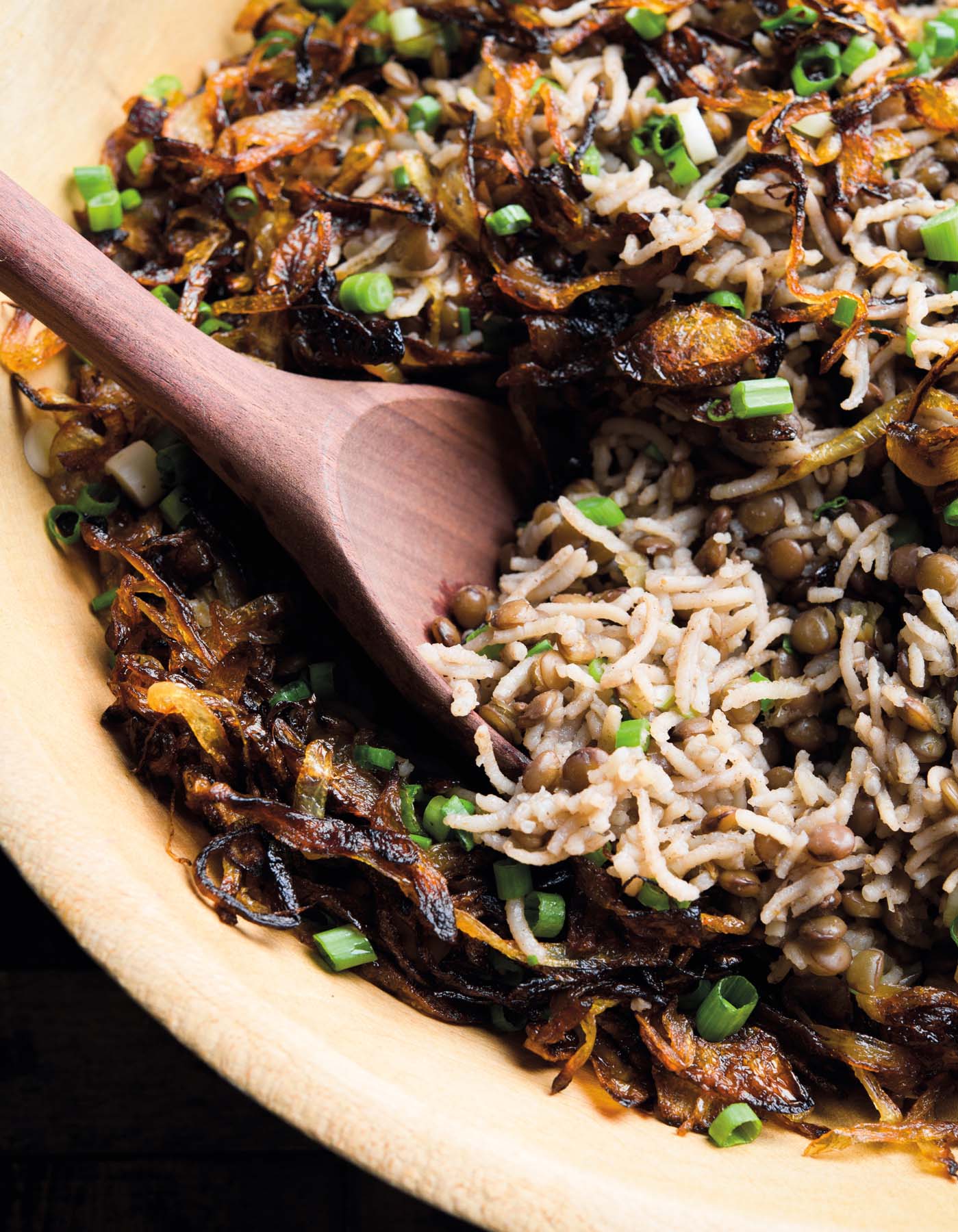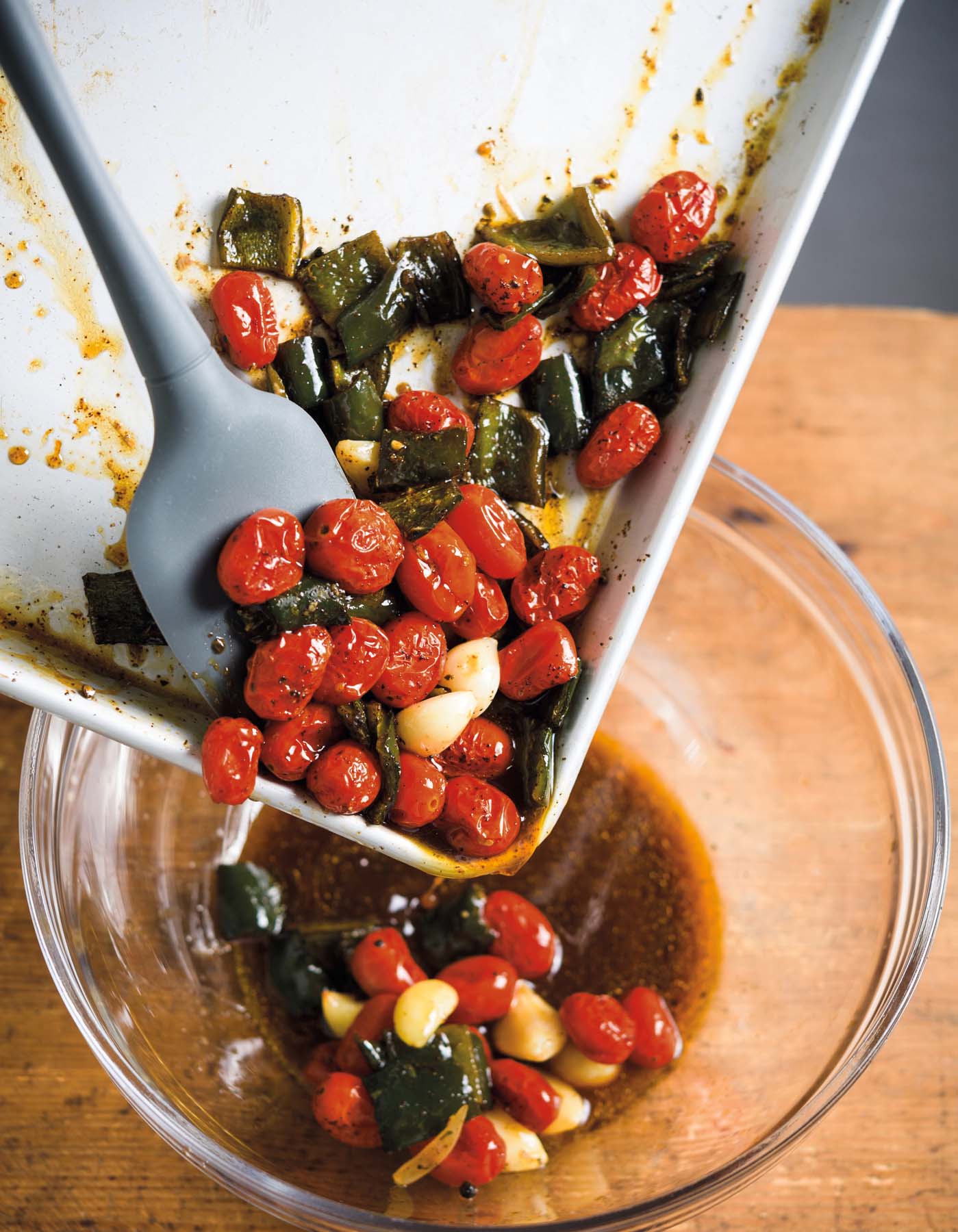Rules are a mixed blessing. They are useful in building a foundation of knowledge, whether in music or cooking. But they also create boundaries that can dampen improvisation.
A few examples. Water for stock. Putting the sweet back into savory. Blooming spices. Bitter and charred as flavors. Herbs as greens. Ginger as a vegetable. Dont stir polenta. Season early. And late. Cook pasta in its sauce, not water.
This is not a license to discard culinary history. Its an opportunity to learn from others and rethink what we do at the stove. These rules may be new to us but they are conventional wisdom for millions of home cooks around the world.
New Rules. Old Rules. It all comes down to the same thing. Fresh, bold dishes made with an enthusiasm for the joy of cooking.
Simplistic flavors and textures lack interest. A balance of contrasting flavors and textures allows each to shine without dominating.
Raw greens can be off-puttingly tough; massaging the leaves with kosher salt tenderizes them.
When root vegetables are cut, their cells are ruptured, releasing sugars and volatile hydrocarbons, the source of their sweetness and aromas. Grating ruptures the most cells, producing sweeter vegetables.
Slick and watery vegetables can be hard to flavor; dressings and seasonings slide right off. Salting them first draws out moisture, leaving behind firmer, drier vegetables to which seasonings can stick.
For full-flavored but still simple salads, add herbs by the cupful rather than as a delicate sprinkle.
Dumping everything in the pot at once creates a uniformity of texture and can overcook more tender ingredients. Stagger them based on how long they should cook.
Heating spices and seasonings in fat intensifies their flavors, drawing them into the liquid and allowing them to better permeate the dish.
For potatoes that are tender on the inside and crispy on the outside, we start them in the microwave.
Roasting cabbage and other sulfurous vegetables at high heat reduces their bitterness and gives them a subtle sweetness.
Sturdy greens like kale can be leathery and tough if not cooked long enough. But a gentle simmer gives them time to become tender, sweet and to meld with other ingredients.
For perfectly crisp and tender vegetables, we combine cooking techniques. Start by searing them in a hot pan to develop browning and flavor. Then add water and a tight-fitting lid to steam them until tender.
Reducing the amount of liquid used in sauces allows the flavors to concentrate and better coat the other ingredients.
For the creamiest, easiest polenta, all you need is an oven, a couple vigorous stirs and no endless whisking.
Use the natural starches in beans, lentils and grains to improve the texture of the finished dish.
Rethink chicken soup by making starchy rice the star while relegating chicken to the role of flavorful garnish.
Delicate herbs make the most impact when theyre kept fresh. This often means adding them last, as heat can dull their flavor.
Chill cooked rice, then toss it with oil before using it for stir-frying. Freshly cooked rice will other- wise turn soft or gluey in the pan.
Pair neutral ingredientssuch as lentils or grainswith brighter, sharper flavors for balance and impact.
Adding hearty seasonings to the cooking liquid for grains and beans infuses them with bolder flavor.
Improve the flavor of canned beans by heating them before seasoning. The heat makes the beans swell; as they cool and contract they better absorb other flavors.
A creamy sauce doesnt have to be made with cream. Grating corn kernels releases their milky pulp and starches to create the base of a rich sauce.
Dont throw pasta water down the drain. The starchy water is a great way to create sauces that coat and cling to the cooked noodles.
Use a slow simmer to transform supermarket tomatoes from bland to bold.
Cooking noodles in a seasoned liquid, rather than boiling them separately in water and finishing them with a sauce, is an easy way to build flavor.
Toasting dry pasta caramelizes some of the starches, producing nutty flavors similar to caramelized sugar.
Boiling pasta until just shy of al dente, then finishing it directly in the sauce (fortified with some of the starchy cooking water), allows the pasta to better absorb other flavors.
Processing the ingredients in a particular orderand only until grainy, not pureedproduces a dramatically better pesto with layers of texture and flavor.
Savory flavors are key to combatting the bland nature of noodles and pasta. Its why tomatoes, olives, anchovies, garlic and cheese are essential to Italian recipes, and mushrooms, fish sauce and soy sauce show up so often in Asian noodles.
Create silkier, thicker sauces by cooking pasta and noodles in less water than typically called for, concentrating the starches that leach out of the noodles and into the cooking water.
Some cheese-based sauces are notoriously difficult to make without clumping. Adding cornstarch to the mixture stabilizes the cheese as it melts, creating a silky-smooth sauce.



